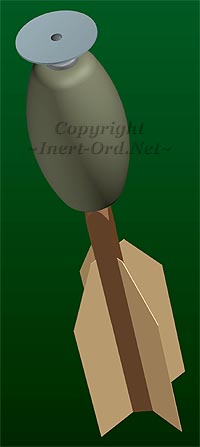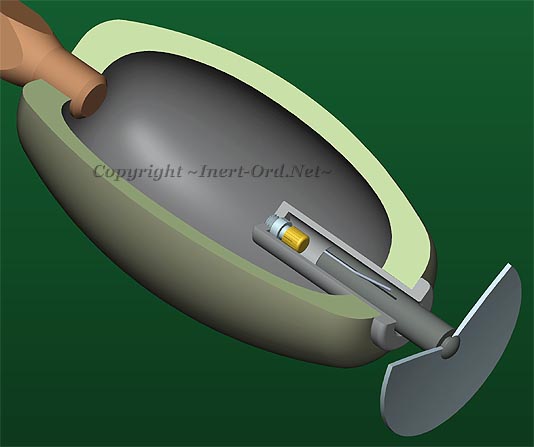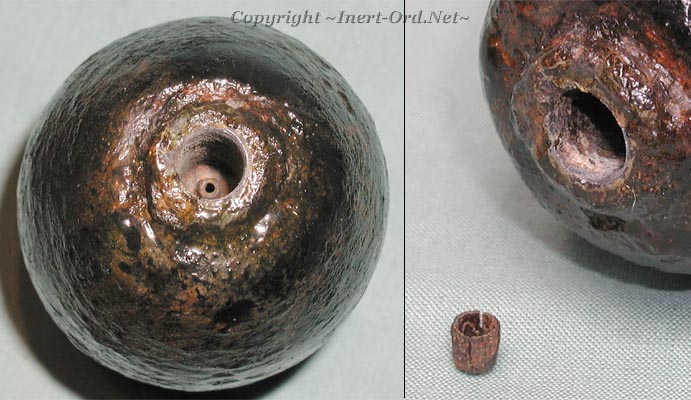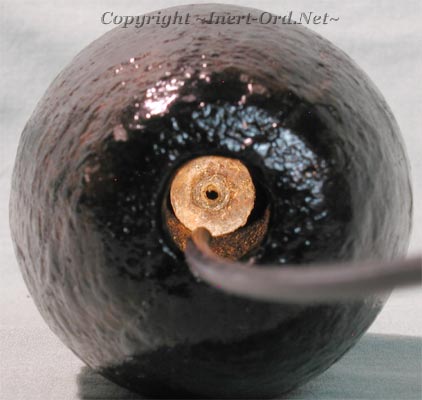With the advent of the percussion cap in the 1850's, grenades could be made to detonate on impact. This was a tempting feature as there were always concerns with fuze malfunctions on time delay grenades. Also the basic percussion concept seemed a much simpler idea. During the American Civil War, there were a number of ideas that made it beyond the drawing board on both the Confederate and Union sides. Though clever, none were particularly outstanding in use. They still proved hazardous to the user and were very unreliable.
While a simple concept, the challenge to developing a practical percussion grenade proved difficult. If made sensitive enough to detonate reliably on target then they had an unpleasant tendancy to explode prematurely. If made safer to handle, then they often would fail to function. The design challenge for the ideal impact fuze continues to this day.


This is “Ketchum’s Improved Hand Grenade” patented by William Ketchum in 1861. These were made in 1, 3 and 5 pound sizes, consisting of a cast iron body with a detonator tube of soft metal pressed into the nose. A large fin assembly, made of wood and paper was inserted into the bottom.
The grenade was loaded by taking a suitable wood dowel and pressing a percussion cap onto the internal nipple. The body was filled with black powder through the hole in the base. Both ends were then stoppered with wood or cork plugs. To prepare for use, the base plug was replaced by the fin assembly, the front plug removed and the plunger inserted. A small spring on the striker held the plunger in place.
When the grenade was thrown the fins were to keep the grenade from tumbling. Impact with the target was intended to slam the striker against the percussion cap which would detonated the grenade. The Ketchum was notorious for not exploding, especially when it hit soft ground. The lack of any safety mechanism also was a drawback.

Below is the same grenade, viewed from the bottom. Illuminated by a fiber optice light is the bottom of the striker tube, with the nipple vent visible.
